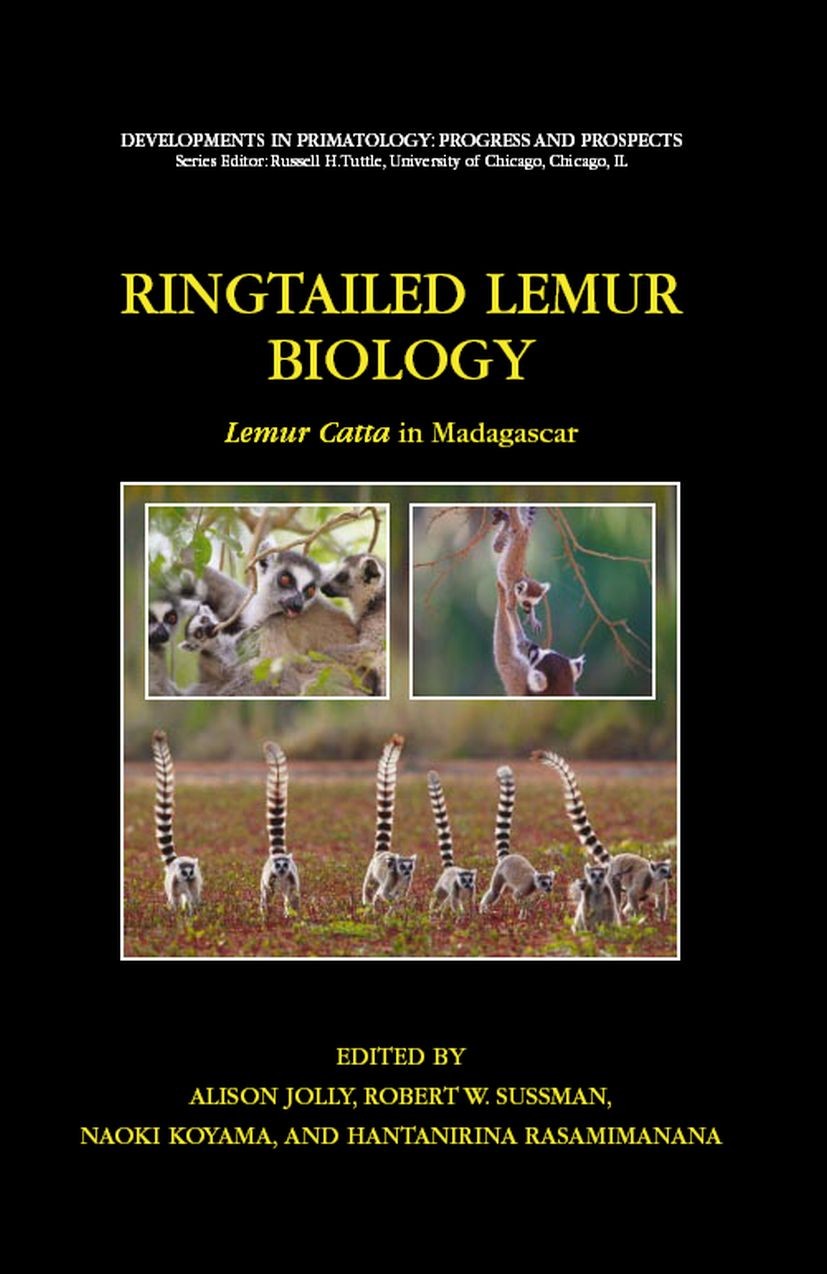| 书目名称 | Ringtailed Lemur Biology | | 副标题 | Lemur catta in Madag | | 编辑 | Alison Jolly,Robert W. Sussman,Hantanirina Rasamim | | 视频video | http://file.papertrans.cn/831/830432/830432.mp4 | | 概述 | Many of the topics covered in this volume have not been researched and integrated for ringtailed lemurs, or for other primates.Represents the most current and up-to-date research on ringtailed lemurs, | | 丛书名称 | Developments in Primatology: Progress and Prospects | | 图书封面 |  | | 描述 | This book is a truly international collaboration, with editors based on four con- nents and first authors from Canada, France, Japan, Madagascar, the United Kingdom, and the United States. Clearly, there is something attractive about studying Lemur catta, the ringtailed lemur. Perhaps it is the lemurs themselves! Why study ringtailed lemurs? Because lemurs are a separate radiation of p- mates from the monkeys, apes, and humans. Because ringtails live in the largest social groups of any known lemur and therefore offer the closest comparison with other social primates, including ourselves. And also because ringtails have become the flagship species of Madagascar. Some 70 species or subspecies of lemurs inhabit Madagascar. Each kind has its own fascinating story, but ringtails are the ones that everyone thinks they know. That black-and-white tail adorns tourist brochures and school notebooks and banknotes. All the same, after 40 years of field study, we don’t know nearly enough. In this book, we make a first estimate on how many might be alive today, but we do not know how many ri- tailed lemurs and how many southern forests will survive. This book explores part of what we do know. It | | 出版日期 | Book 2006 | | 关键词 | Ecology; behavior; behavioral ecology; environment; perception; physiology; primates; Model vertebrates | | 版次 | 1 | | doi | https://doi.org/10.1007/978-0-387-34126-2 | | isbn_softcover | 978-1-4419-4093-3 | | isbn_ebook | 978-0-387-34126-2Series ISSN 1574-3489 Series E-ISSN 1574-3497 | | issn_series | 1574-3489 | | copyright | Springer-Verlag US 2006 |
The information of publication is updating

|
|
 |Archiver|手机版|小黑屋|
派博传思国际
( 京公网安备110108008328)
GMT+8, 2025-11-13 18:40
|Archiver|手机版|小黑屋|
派博传思国际
( 京公网安备110108008328)
GMT+8, 2025-11-13 18:40


